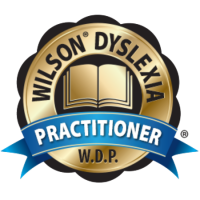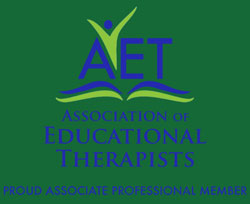Letter Confusions and Standardized Testing
Dear Families,
As standardized testing time approaches, anxiety builds for many teachers, students, and families. There is a great deal of pressure being put on teachers and students to raise test scores. But putting pressure on our kids will not help.

Some Things to Keep in Mind at this Time of Year…
You can’t study for standardized tests. At school, the teachers are preparing students for how to take the test.
Strategies for the Dreaded-Standardized Tests
Below you will find a few things that may help your child during test taking and you can try them out during homework time:
Practice reading directions and identify the question that is being asked.
Underline the question.
Highlight important words in the reading passage.
Analyze the question to determine what kind of question it is and what kind of answer is expected.
Identify text structure by looking at features of the text and asking, “What does that tell me about the type of text I am about to read?” If it is cause and effect, I will be looking for the relationship between events.
Main idea questions are about identifying the big picture, main point, or theme.
Details and Fact questions want to know specific information.
Cause and Effect is the relationship between events or things that are related to each other.
Sequencing has to do with identifying the time-order of events.
Identifying the type of questions that are being asked can make all the difference when taking tests.
Please remember that the above skills take time to develop and cannot be taught before the test. More importantly, stay positive and see if you can find all the positive things your child is doing and let them know it!
Clarise Lyon,
Director
![]()
Sometimes we get questions related to letter reversals and are asked “Will he outgrow it?” It is important to know what is typical development versus how to recognize the warning signs.
On that note, it is easy to see why b, d, p, q, n, u all of which are mirror image letters to each other, can be easily confused.
To begin, most letter reversals occur because there is confusion about how to form the letters when writing.
By practicing the proper formation with large motor movements and saying the formation aloud using visual-motor sensory integration, you can actually wire the brain to accurately read and write words with these letters 100% of the time.
However, we cannot always control the environment that our children are writing. For instance, when students are required to complete assignments at school, often times, the old habits of forming letters from the bottom up or backwards returns and quite quickly. This is because they have not had enough time to practice this new skill.
What are some things you can do to help?
- Talk to your child’s teachers and let them know that you are working on the letter formations for b and d and need their help.
Ask your child’s teachers to provide specific accommodations for your child that will encourage writing, and still reinforce the correct formation of the confusing letters until your child has had enough practice.
When is it Age Appropriate?
If your child is a beginning reader or between the ages of 3 to 7 years old and makes occasional reversals, it is not cause for concern because it is age appropriate.
When Should Action Be Taken?
If your child is 8 years or older and has been receiving instruction in reading but continues to have letter reversals, it is time to take action.
How to Prevent Letter Confusions…
What most parents may not know is that letter reversals can be avoided by carefully structuring writing to minimize the likelihood of ever confusing the formation of letters. Here are some tips below:
- Teach the correct letter formation – one letter at a time. Wait until your child masters it before moving on to other letters.

When forming the letter b, say something like, “Start at the skyline-top, go down to the grass line–bottom, trace back to the plane line–middle and round to the grass line–baseline.”

To write the letter d, you can say, “Start at the plane line and go back around down to the grass line then go straight up to the skyline and back down to the grass line.” Be sure not to lift the pencil from the paper when writing these letters.
Use lined paper so it is clear where the lines begin and end. We use skyline paper from the Wilson Reading System to demonstrate where the skyline-top, plane line-middle, and grass line-bottom is located.
When working with older students it may be more difficult to address the b and d confusion. Here are some suggestions of strategies that can help if they are practiced daily.
Air Writing

- Use the dominant hand and pretend that the finger is the pen while the nondominant hand holds the elbow of the dominant arm.
Have the whole arm involved while your student simultaneously says the sound of the letter.

Use Textured Surfaces
- Teach the letters b and d on surfaces such as: sandpaper, carpet squares, flannel, or corrugated cardboard.
Have your student trace with his pointer finger while saying the sound of the letter.
Introducing Cursive
- More research is showing that cursive offers cognitive benefits that are not gotten from writing in manuscript and keyboarding alone.
A resource that is used to teach cursive writing at our learning center is called Cursive Logic. The author, Linda Shrewsbury, identified four pen strokes that can be used to teach all the letters of the alphabet. By using the strategies from her book, our students are learning cursive in less than 8 weeks.
For more information about writing…
http://www.cursivelogic.com/why-cursive/
http://www.teachhandwriting.co.uk/Spatial%20Awareness%20Games%20with%20Logo.pdf




